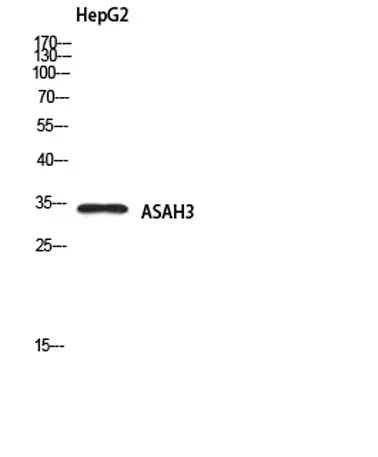ASAH3 rabbit pAb
CAT:
855-ES8356-02
Size:
100 μL
Price:
Ask
- Availability: 24/48H Stock Items & 2 to 6 Weeks non Stock Items.
- Dry Ice Shipment: No




ASAH3 rabbit pAb
- Description: Ceramides are synthesized during epidermal differentiation and accumulate within the interstices of the stratum corneum, where they represent critical components of the epidermal permeability barrier. Excess cellular ceramide can trigger antimitogenic signals and induce apoptosis, and the ceramide metabolites sphingosine and sphingosine-1-phosphate (S1P) are important bioregulatory molecules. Ceramide hydrolysis in the nucleated cell layers regulates keratinocyte proliferation and apoptosis in response to external stress. Ceramide hydrolysis also occurs at the stratum corneum, releasing free sphingoid base that functions as an endogenous antimicrobial agent. ACER1 is highly expressed in epidermis and catalyzes the hydrolysis of very long chain ceramides to generate sphingosine (Houben et al. 2006 [PubMed 16477081]; Sun et al. 2008 [PubMed 17713573]). [supplied by OMIM, Jul 2010],
- Synonyms: ACER1; ASAH3; Alkaline ceramidase 1; AlkCDase 1; Alkaline CDase 1; Acylsphingosine deacylase 3; N-acylsphingosine amidohydrolase 3
- Gene ID: 125981
- UniProt: Q8TDN7
- Cellular Locus: Endoplasmic reticulum membrane ; Multi-pass membrane protein.
- Host: Rabbit
- Species Reactivity: Human, Rat, Mouse,
- Immunogen: Synthesized peptide derived from ASAH3 . at AA range: 100-180
- Clonality: Polyclonal
- Validated Applications: WB, ELISA
- Stability: 1 year
- Concentration: 1 mg/mL
- Dilution: Western Blot: 1/500 - 1/2000. ELISA: 1/10000. Not yet tested in other applications.
- Molecular Weight: 34kD
- Storage Conditions: PBS with 0.02% sodium azide and 50% glycerol pH 7.4. Store at -20°C. Avoid repeated freeze-thaw cycles.
